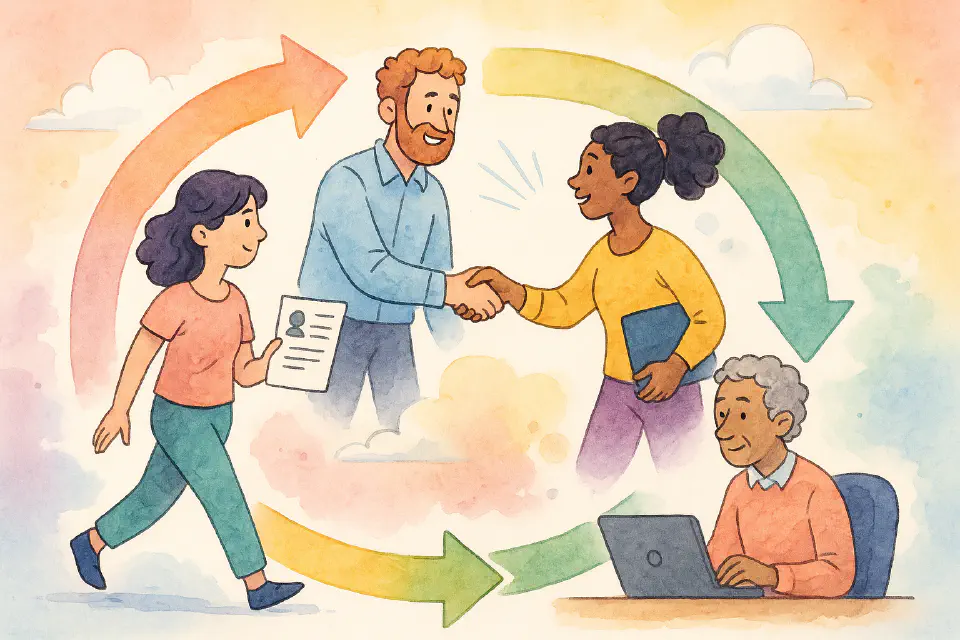
Employee Lifecycle
Employees don’t just appear and disappear—they experience a journey. The employee lifecycle helps HR manage that journey with purpose, consistency, and care.
Most organizations think in terms of tasks: hire someone, train them, review their performance, and eventually let them go.
But great HR teams think in terms of lifecycle.
The employee lifecycle (ELC) is a structured way to understand and manage the full journey of an employee—from attraction and hiring to development, transition, and departure.
It gives HR a strategic framework to support people and the business at every stage.
Why the Employee Lifecycle Matters
Without lifecycle thinking, organizations risk:
- Poor candidate experience
- Inconsistent onboarding
- Confusing performance expectations
- Missed development opportunities
- Disengagement and unplanned turnover
By managing each stage intentionally, HR can improve employee experience, reduce risk, and create lasting value.
The Six Key Phases
This section is structured around the most common version of the employee lifecycle:
- Hiring – workforce planning, job design, sourcing, selection
- Onboarding – integration, probation, early development
- Development – learning, performance, growth, engagement
- Retention – culture, mobility, rewards, feedback
- Exit – offboarding, interviews, knowledge transfer
- Continuous Improvement – analyzing lifecycle data and closing gaps
Each phase has unique challenges, tools, and legal considerations.
We’ll walk through all of them in the following pages — with models, examples, warnings, and best practices.
Who Should Use This Framework?
- HR teams to design scalable processes
- People managers to better support their teams
- Founders to build structure as they grow
- Employees to understand what to expect and ask for
📌 Next page: What It Is and Why It Matters – Deeper dive into the concept, origin, and variations of the employee lifecycle.